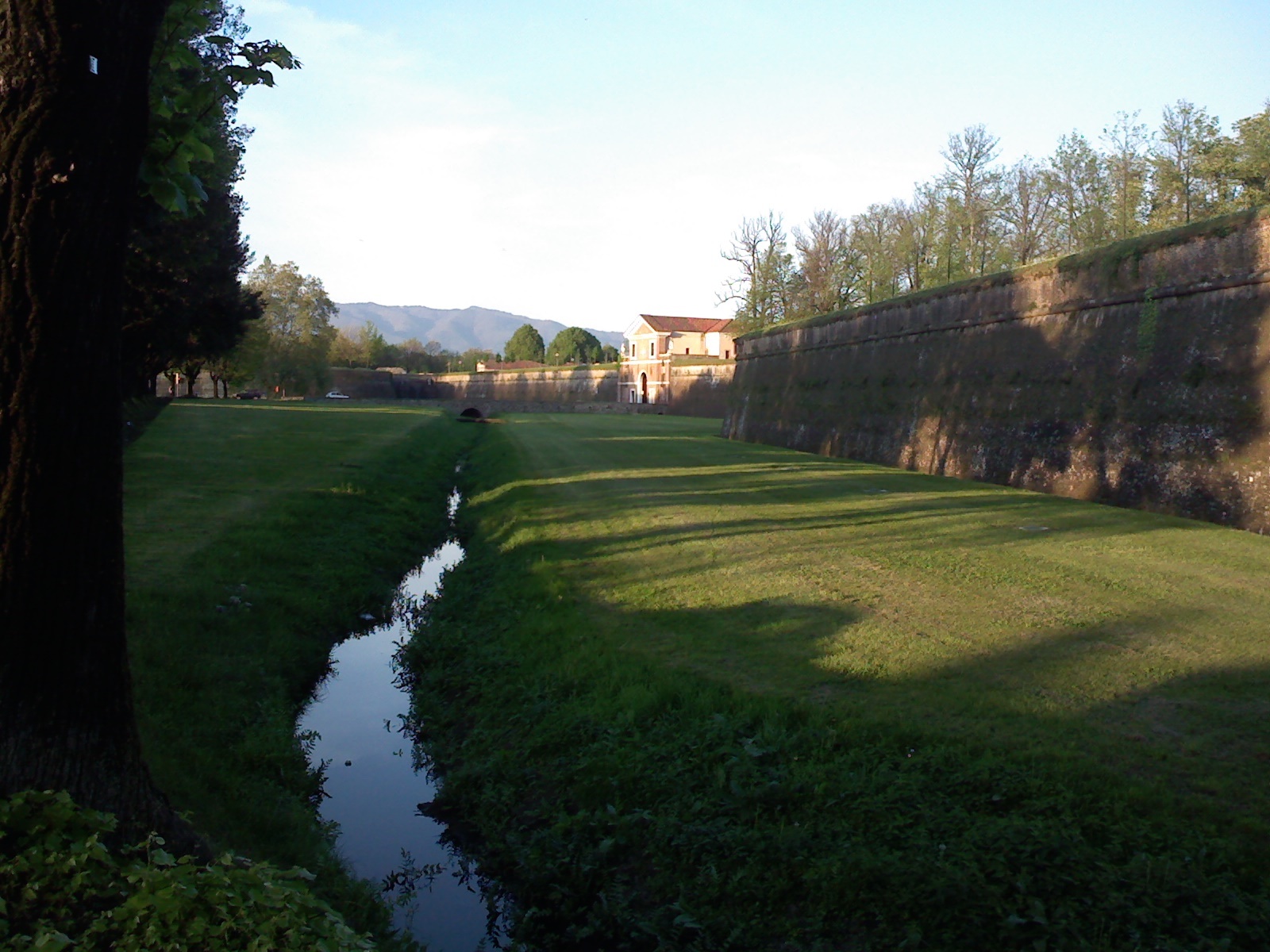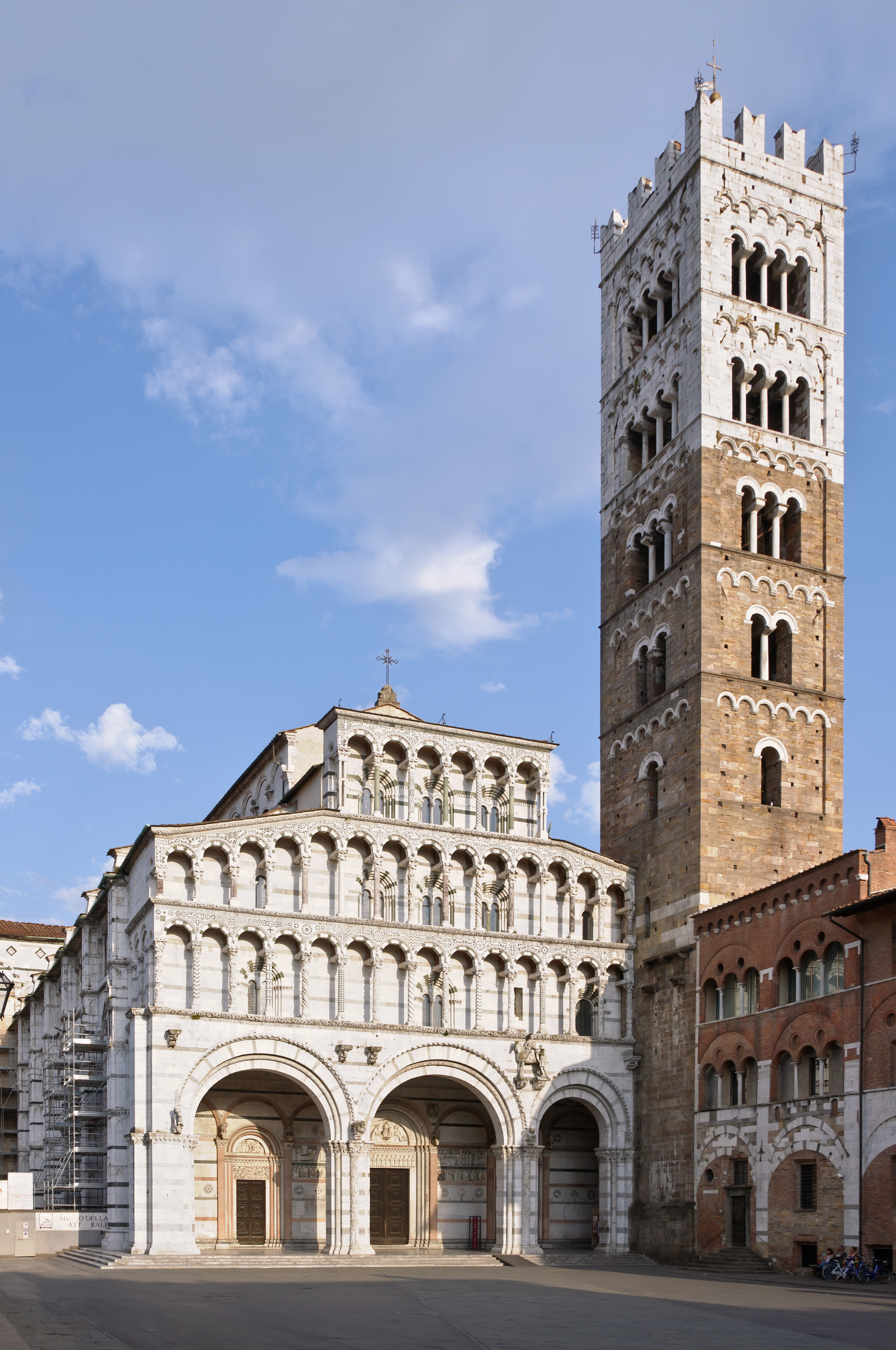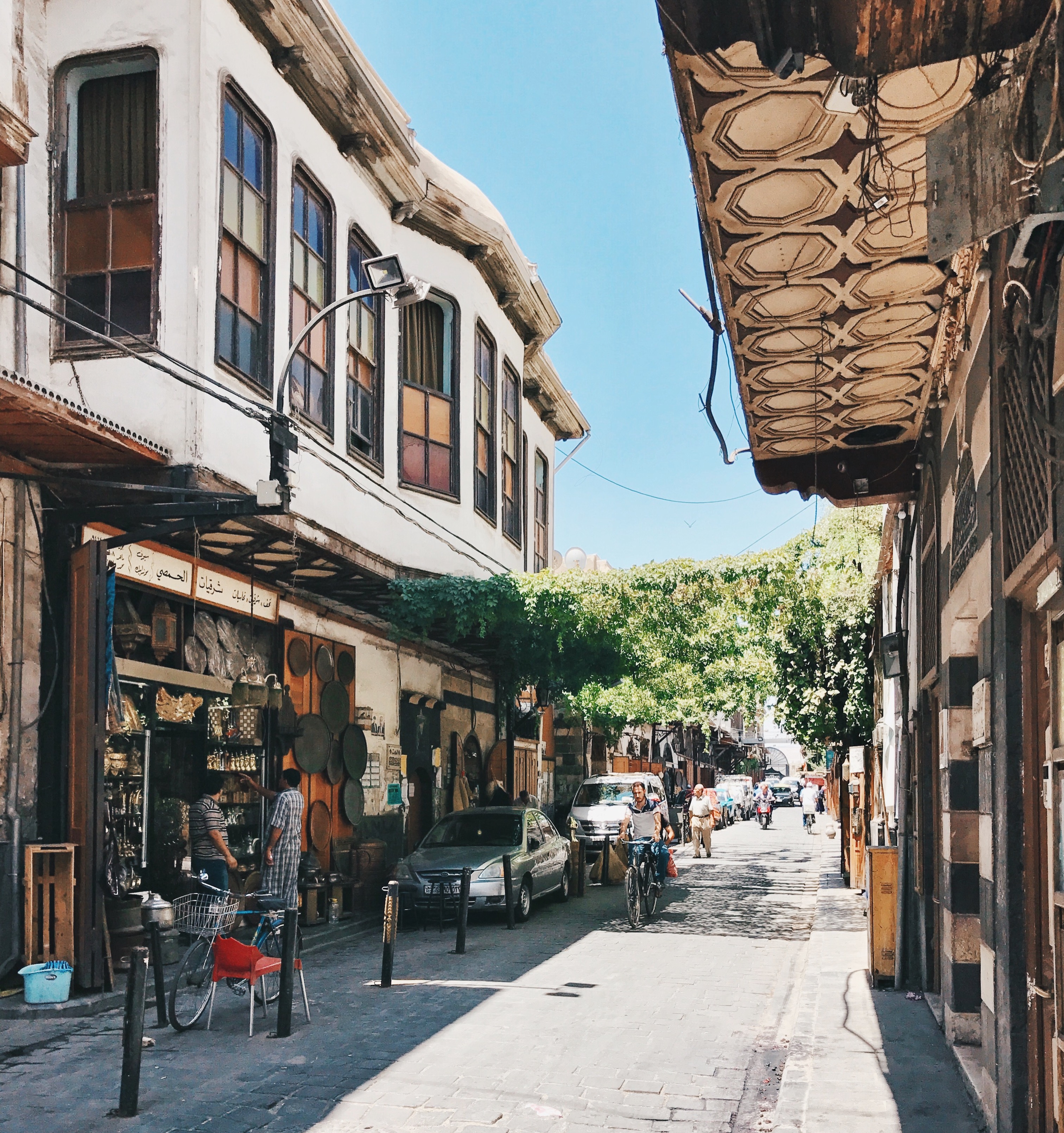|
Walls Of Lucca
The walls of Lucca are a series of stone, brick, and earthwork fortifications surrounding the central city of Lucca in Tuscany, Italy. They are among the best preserved Renaissance fortifications in Europe, and at 4 kilometers and 223 meters in circumference they are the second largest intact example of a fully walled Renaissance city after Walls of Nicosia, Nicosia, Cyprus. The current walls of Lucca, which replaced earlier Middle Ages, medieval and Roman Empire, Roman fortifications, are the result of a construction campaign that started on May 7, 1504, and ended a century and a half later in 1648, with additional structural updates in the second half of the seventeenth century based on new knowledge and construction techniques. These walls play an important role in the cultural identity of the city of Lucca and its surroundings, and as a physical monument to the region's history, and Lucca's longstanding Republic of Lucca, independence as a republic. The walls were also concei ... [...More Info...] [...Related Items...] OR: [Wikipedia] [Google] [Baidu] |
Lucca
Città di Lucca ( ; ) is a city and ''comune'' in Tuscany, Central Italy, on the Serchio River, in a fertile plain near the Ligurian Sea. The city has a population of about 89,000, while its Province of Lucca, province has a population of 383,957. Lucca is known as an Italian "Città d'arte" (City of Art) from its intact Renaissance-era Walls of Lucca, city walls and its very well preserved historic center, where, among other buildings and monuments, are located the Piazza dell'Anfiteatro, which has its origins in the second half of the 1st century A.D., the Guinigi Tower, a tower that dates from the 14th century and the Cathedral of San Martino. The city is the birthplace of numerous world-class composers, including Giacomo Puccini, Alfredo Catalani, and Luigi Boccherini. Toponymy To the Ancient Rome, Ancient Romans, Lucca was known as ''Luca''. From more recent and concrete toponymic studies, the name Lucca has references that lead to "sacred grove" (Latin: ''lucus''), " ... [...More Info...] [...Related Items...] OR: [Wikipedia] [Google] [Baidu] |
Lucca Modern Vs Roman Walls
Città di Lucca ( ; ) is a city and ''comune'' in Tuscany, Central Italy, on the Serchio River, in a fertile plain near the Ligurian Sea. The city has a population of about 89,000, while its province has a population of 383,957. Lucca is known as an Italian "Città d'arte" (City of Art) from its intact Renaissance-era city walls and its very well preserved historic center, where, among other buildings and monuments, are located the Piazza dell'Anfiteatro, which has its origins in the second half of the 1st century A.D., the Guinigi Tower, a tower that dates from the 14th century and the Cathedral of San Martino. The city is the birthplace of numerous world-class composers, including Giacomo Puccini, Alfredo Catalani, and Luigi Boccherini. Toponymy To the Ancient Romans, Lucca was known as ''Luca''. From more recent and concrete toponymic studies, the name Lucca has references that lead to "sacred grove" (Latin: ''lucus''), "to cut" (Latin: ''lucare'') and "luminous space" ... [...More Info...] [...Related Items...] OR: [Wikipedia] [Google] [Baidu] |
Postern
A postern is a secondary door or gate in a fortification such as a city wall or castle curtain wall. Posterns were often placed in concealed locations, allowing inconspicuous entrance and exit. In the event of a siege, a postern could act as a sally port, allowing defenders to make a sortie on the besiegers. Placed in a less exposed, less visible location, they were usually relatively small, and therefore easily defensible.Van Emden, Wolgang. "Castle in Medieval French Literature", ''The Medieval Castle: Romance and Reality'' (Kathryn L. Reyerson, Faye Powe, eds.) U of Minnesota Press, 1991, p.17 Tactical use Posterns were one of the essen ...[...More Info...] [...Related Items...] OR: [Wikipedia] [Google] [Baidu] |
Porta San Pietro, Lucca 11
Porta can refer to: People * Porta (rapper) (born 1988), stagename of Christian Jiménez Bundo, a Spanish rap singer * Porta (surname), surname Places * La Porta, a commune in the Haute-Corse department of France on the island of Corsica * Porta (Barcelona) a neighbourhood of Barcelona, Spain * Porta, Pyrénées-Orientales, a commune in the Pyrénées-Orientales department in southern France * Porta, Thessaly, a pass and settlement in Thessaly, central Greece * Porta, Xanthi, a district of Xanthi in Thrace, northeastern Greece * ''Porta'', the Hungarian name for Poarta village, Bran Commune, Braşov County, Romania * Porta del Sol, a tourism region in western Puerto Rico * Porta Littoria, the name applied from 1939 to 1946 for the town of La Thuile in the Valle d’Aosta, Italy * Porta Westfalica in Germany * Porta Nigra in Trier, Germany Convents * Porta Coeli (Moravia), in the Czech Republic, a convent from 1239 after which an asteroid is named * Porta Coeli (Puerto Rico), ... [...More Info...] [...Related Items...] OR: [Wikipedia] [Google] [Baidu] |
List Of Rulers Of Tuscany
This is a list of grand dukes of Tuscany. The title was created on 27 August 1569 by a papal bull of Pope Pius V to Cosimo I de' Medici, Grand Duke of Tuscany, Cosimo I de' Medici, member of the illustrious House of Medici. His coronation took place in Rome on 5 March 1570 by the hands of the Pope himself. Cosimo's family, the Medici dynasty, had been ruling the Florentine Republic, the predecessor of the Grand Duchy of Tuscany, since 1434, first as Lords of Florence and later as Dukes. The title of Grand Duke, was in fact the second title of recognition within the Tuscan politics given by a Pope to the Medici family, the first being that of Duke of the Florentine Republic, created by Pope Clement VII in 1532. The official residence of the Grand Dukes was the Palazzo Pitti in Florence, bought by the Medici in 1549. Background Margraves reigned in the 9th century when the region was part of the Margraviate of Tuscany. Beginning in the 11th century, the region was fully divided ... [...More Info...] [...Related Items...] OR: [Wikipedia] [Google] [Baidu] |
Bastion
A bastion is a structure projecting outward from the curtain wall of a fortification, most commonly angular in shape and positioned at the corners of the fort. The fully developed bastion consists of two faces and two flanks, with fire from the flanks being able to protect the curtain wall and the adjacent bastions. Compared with the medieval fortified towers they replaced, bastion fortifications offered a greater degree of passive resistance and more scope for ranged defence in the age of gunpowder artillery. As military architecture, the bastion is one element in the style of fortification dominant from the mid 16th to mid 19th centuries. Evolution By the middle of the 15th century, artillery pieces had become powerful enough to make the traditional medieval round tower and curtain wall obsolete. This was exemplified by the campaigns of Charles VII of France who reduced the towns and castles held by the English during the latter stages of the Hundred Years War, and by th ... [...More Info...] [...Related Items...] OR: [Wikipedia] [Google] [Baidu] |
Francesco Di Giorgio Martini
Francesco di Giorgio Martini (1439–1501) was an Italian architect, engineer, painter, sculptor, and writer. As a painter, he belonged to the Sienese School. He was considered a visionary architectural theorist—in Nikolaus Pevsner's terms: "one of the most interesting later Quattrocento architects". As a military engineer, he executed architectural designs and sculptural projects and built almost seventy fortifications for the Federico da Montefeltro, Count (later Duke) of Urbino, building city walls and early examples of star-shaped fortifications. Born in Siena, he apprenticed as a painter with Vecchietta. In panels painted for '' cassoni'' he departed from the traditional representations of joyful wedding processions in frieze-like formulas to express visions of ideal, symmetrical, vast and all but empty urban spaces rendered in perspective. He composed an architectural treatis''Trattato di architettura, ingegneria e arte militare'' the third of the Quattrocento, ... [...More Info...] [...Related Items...] OR: [Wikipedia] [Google] [Baidu] |
Matteo Civitali
Matteo Civitali (1436–1501) was an Italian Renaissance sculptor and architect, painterThe only known painting attributed to Matteo, a triptych of the ''Virgin and Child with Saints Michael Archangel, John the Baptist, Biagio and Peter'', executed in 1467–69, was loaned to the 2004 exhibition. and engineer from Lucca. He was a leading artistic personality of the Early Renaissance in Lucca, where he was born and where most of his work remains. Biography He was trained in Florence, where Antonio Rossellino and Mino da Fiesole influenced his mature style. He is known to have sculpted statues of Adam, Eve, Abraham, Saints Zacchariah and Elizabeth, and others for the chapel of San Giovanni Battista in Genoa Cathedral.R. Soprani and CG. Ratti. He is mentioned with the name of ''Matteo Civitali'' by Vasari in his biography of Jacopo della Quercia, and appears to have taken up the art of sculpture at the age of 40 years, after years of practicing as a "barber" (surgeon). While consid ... [...More Info...] [...Related Items...] OR: [Wikipedia] [Google] [Baidu] |
Via Francigena
The Via Francigena (), also known as Francisca or Romea, is an ancient road and Christian pilgrimage, pilgrimage route running from the City status in the United Kingdom#Cathedral towns, cathedral city of Canterbury in England, through France and Switzerland, to Rome and then to Apulia, Italy, where there were ports of embarkation for the Holy Land. It was known in Italy as the Via Francigena ("the road that comes from France") or the Via Romea Francigena ("the road to Rome that comes from France"). In Middle Ages, medieval times it was an important road and pilgrimage route for those wishing to visit the Holy See and the tombs of the Apostles in the New Testament, apostles Saint Peter, Peter and Paul the Apostle, Paul. History of the pilgrimage to Rome In the Middle Ages, Via Francigena was the major pilgrimage route to Rome from the north. The route was first documented as the "Lombard Way", and was first called the ''Iter Francorum'' (the "Frankish Route") in the ''Itinerari ... [...More Info...] [...Related Items...] OR: [Wikipedia] [Google] [Baidu] |
Porta San Gervasio, Xiii Secolo, 012
Porta can refer to: People * Porta (rapper) (born 1988), stagename of Christian Jiménez Bundo, a Spanish rap singer * Porta (surname), surname Places * La Porta, a commune in the Haute-Corse department of France on the island of Corsica * Porta (Barcelona) a neighbourhood of Barcelona, Spain * Porta, Pyrénées-Orientales, a commune in the Pyrénées-Orientales department in southern France * Porta, Thessaly, a pass and settlement in Thessaly, central Greece * Porta, Xanthi, a district of Xanthi in Thrace, northeastern Greece * ''Porta'', the Hungarian name for Poarta village, Bran Commune, Braşov County, Romania * Porta del Sol, a tourism region in western Puerto Rico * Porta Littoria, the name applied from 1939 to 1946 for the town of La Thuile in the Valle d’Aosta, Italy * Porta Westfalica in Germany * Porta Nigra in Trier, Germany Convents * Porta Coeli (Moravia), in the Czech Republic, a convent from 1239 after which an asteroid is named * Porta Coeli (Puerto Rico), ... [...More Info...] [...Related Items...] OR: [Wikipedia] [Google] [Baidu] |
Roman Forum
A forum (Latin: ''forum'', "public place outdoors", : ''fora''; English : either ''fora'' or ''forums'') was a public square in a municipium, or any civitas, of Ancient Rome reserved primarily for the vending of goods; i.e., a marketplace, along with the buildings used for shops and the stoas used for open stalls. But such fora functioned secondarily for multiple purposes, including as social meeting places for discussion. Many fora were constructed at remote locations along a road by the magistrate responsible for the road, in which case the forum was the only settlement at the site and had its own name, such as Forum Popili or Forum Livi. Functions In addition to its standard function as a marketplace, a forum was a gathering place of great social significance, and often the scene of diverse activities, including political discussions and debates, rendezvous, meetings, et cetera. In that case, it supplemented the function of a '' conciliabulum''. Every municipality () ha ... [...More Info...] [...Related Items...] OR: [Wikipedia] [Google] [Baidu] |
Decumanus Maximus
In Roman urban planning, a ''decumanus'' was an east–west-oriented road in a Roman city or '' castrum'' (military camp). The main ''decumanus'' of a particular city was the ''decumanus maximus'', or most often simply "the ''decumanus''". In the rectangular street grid of the typical Roman city plan, the ''decumanus'' was crossed by the perpendicular ''cardo'', a north–south street. In a military camp, the ''decumanus'' connected the Porta Praetoria (closest to the enemy) to the Porta Decumana (away from the enemy). In the center – called groma – of a city or ''castrum'', the ''decumanus maximus'' crossed the perpendicular ''cardo maximus'', the primary north–south road. The forum was normally located close to this intersection. Etymology ''Decumanus'' or ''decimanus'' was the Latin word for 'tenth'. This name is said to come from the fact that the ''via decumana'' or ''decimana'' (the "tenth") separated the Tenth Cohort from the Ninth in the legionary encampme ... [...More Info...] [...Related Items...] OR: [Wikipedia] [Google] [Baidu] |







